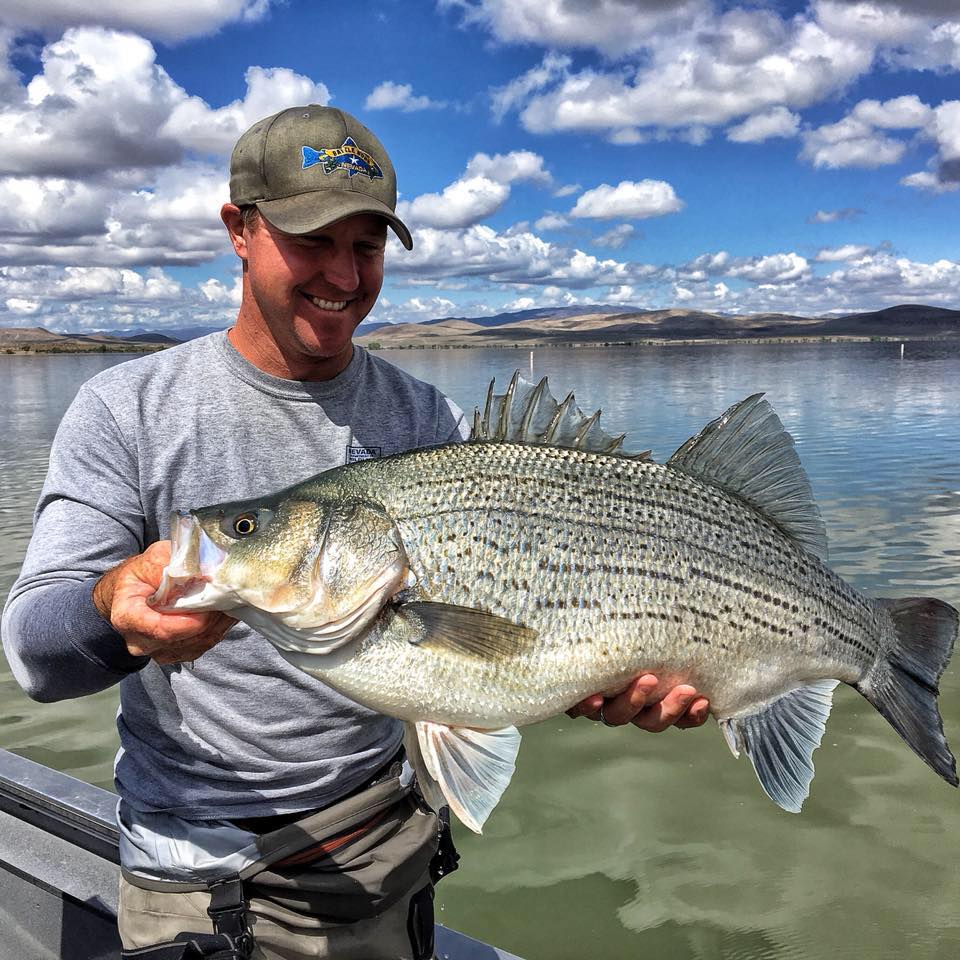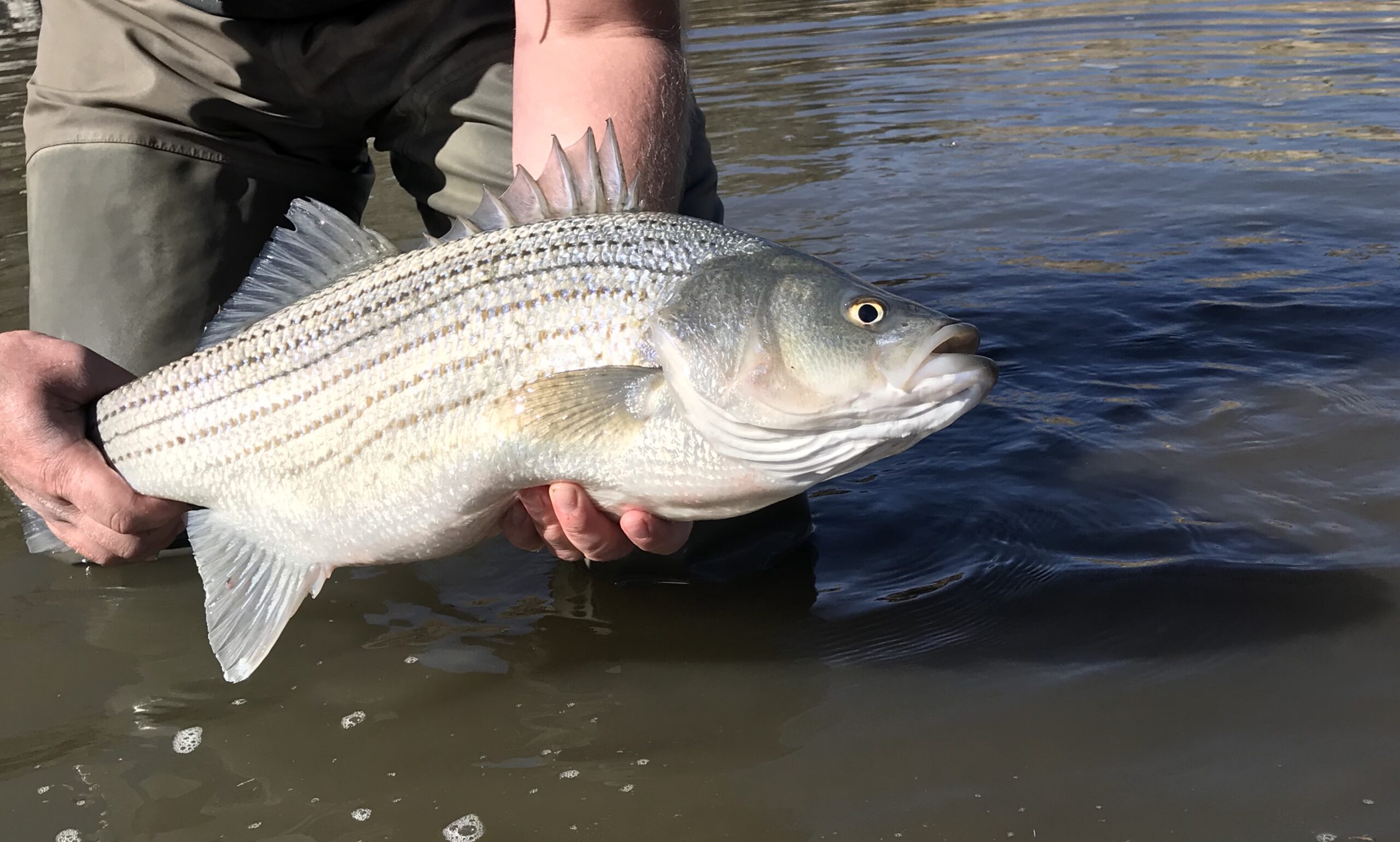Fish Consumption Advisories
Because fish is a lean, low-calorie source of protein, it can be an important part of a healthy diet. However, some fish may contain unhealthy levels of mercury in their tissue which can be harmful if eaten in large quantities over a lifetime. To protect the health of everyone who enjoys eating fish caught in Nevada waters, NDOW has been sampling fish tissue for mercury analysis since 2005 to determine locations where fish have high methylmercury concentrations. The samples are sent to the Environmental Protection Agency (EPA) Lab to provide mercury analysis of these fish. When a specific fish species exceeds the Food and Drug Administration (FDA) action level of 1.0 part per million mercury, there is a potential risk for the public’s health based on the amount of fish typically eaten. Based on the FDA action level, the Nevada Division of Public and Behavioral Health (NDPBH) makes recommendations on which waters warrant consumption advisories due to elevated mercury levels. NDPBH recommends limited or no consumption of fish from the following waters:
| Carson River from Dayton to the Lahontan Dam and all water in the Lahontan Valley | No consumption of any fish |
| Little and Big Washoe lakes | No consumption of white bass |
| Rye Patch Reservoir | No consumption of wipers and walleye and no more than one eight-ounce meal per week of any other fish |
| Chimney Dam Reservoir | No consumption of walleye |
| Comins Lake | No consumption of largemouth bass and northern pike |
When fishing in waters where “no consumption” recommendations are in effect, pregnant women, nursing mothers and children should limit their consumption, eat smaller sized fish (rather than larger ones) or practice catch-and-release. Find advice about eating fish from the FDA and EPA here.
Fish Consumption Recommendations
NDOW also uses this data to determine safe consumption rates from other waters around the state where fish fall below the FDA action level. Click on the links below (Western, Southern, Eastern) to find the recommended consumption rate of fish from a water that you may be fishing. Consumption rates are in accordance with EPA guidelines (see EPA Publication: EPA 823-B-00-008, November 2000; guidance for Assessing Chemical Contaminant Data for Use in Fish Advisories. Vol. 2: Risk Assessment and Fish Consumption Limits, 3rd Edition. Table 4-3.)
Typical Meal Size
An adult meal size is considered to be 8-ounces of fish meat, about the size of two decks of cards. Children should eat smaller, age-appropriate amounts.
Consider how much fish from all sources (caught and purchased) that you are likely to eat in a month and follow the recommendations accordingly. Space your meals of fish evenly during the month when eating fish that have consumption recommendations. For example, the consumption recommendation for brown trout from the Carson River near the Bryant Creek confluence is 8-meals per month. This should be spaced out to 2-meals per week, rather than eating the entire 8-meals in a few days time. Removing the skin does not decrease the amount of mercury in the edible portions.
The EPA and FDA have issued advice for pregnant or nursing mothers and children to make informed choices when it comes to the types of fish that are nutritious and safe to eat. That advice can be found here.
The bottom line is that Nevadans should feel free to enjoy fishing in the state’s waters and to enjoy fish they catch as an important and healthy part of their diet. Generally, larger, older fish can concentrate more mercury than smaller, younger ones. These waters still provide great fishing value, and some species are even managed for their trophy-sized quality. It would be best to release these fish and just enjoy the experience of fishing and being in the outdoors.
Your Questions
About Mercury in Fish

Learn all you need to know about mercury to safely fish and consume fish from Nevada’s waters!
What is mercury and methylmercury and how does it enter the environment?
Mercury is a naturally occurring metal typically found in the form of cinnabar ore which contains mercuric sulfide. When the ore is heated mercury is vaporized, captured, and cooled to form the familiar liquid metal. At room temperature mercury is a silvery odorless liquid which vaporizes easily. Mercury is used in thermometers, thermostats, electronics, propellant and fluorescent lamps. Mercury pollution can contaminate air, water, and soil. The largest source of atmospheric mercury results from the burning of fossil fuels, especially coal. In Nevada the largest source of atmospheric mercury is caused from processing gold through precious metal mines operations. Once mercury is released into the atmosphere through smokestacks and processing emissions, it can travel long distances, settle on soil and wash into lakes and rivers. Although mercury performs many useful functions in our workplaces and homes, it is toxic and can impair our health. Mercury is a potent neurotoxin, meaning that it interferes with the way nerve cells function.
In Nevada, watersheds that have mercury advisories are generally a result of mercury released into the environment because of historic mining practices. Mercury contamination at these sites is a legacy of the mining era of the late 1800s, when mercury was utilized for processing of gold and silver ore mined from the “Comstock Lode” and other regions throughout northern Nevada. In mills associated with the Comstock Lode near Virginia City, it is estimated that 14 million pounds of mercury was released into the environment. Once mercury enters the sediments in lakes, rivers and streams, bacteria change some of the inorganic mercury into the organic, more toxic methylmercury. Fish absorb the methylmercury as they feed in these waters and so it builds up in them.
What are the health effects of mercury exposure?
All humans are exposed to some level of mercury. However, when people are exposed to high levels of mercury, mercury poisoning can cause a decreased ability to see, hear, talk, and walk. It can cause personality changes, depression, irritability, nervousness, and the inability to concentrate. It can also cause damage to the brain, kidneys, and lungs. Mercury is a particularly serious problem for pregnant women and children. Fetuses and young children suffer the greatest risk because their nervous systems are still developing. They are four to five times more sensitive to mercury than adults.
Why are mercury levels higher in some fish species than in others?
Once mercury enters a lake or stream it is readily taken up by bacteria found in sediments. Mercury can then build up in tissue of zooplankton and insects as they graze on these bacteria which are then eaten by predators and these predators are, in turn, eaten by even larger predators. The mercury concentration increases every step, all the way up the food chain to “top predators” such as Walleye. Concentrations of mercury in large or older fish can be many times higher than those found in the insects at the bottom of the food chain.
Is there methylmercury in all fish and shellfish?
Nearly all fish and shellfish contain traces of methylmercury. However, larger fish that have lived longer have the highest levels of methylmercury because they’ve had more time to accumulate it. Methylmercury also biomagnifies. For example, large predatory fish are more likely to have high levels of mercury as a result of eating many smaller fish that have acquired mercury through ingestion of plankton. In Northern Nevada waters, walleye, bass, wipers, and northern pike tend to accumulate the highest levels of methylmercury.
Should pregnant or nursing women avoid eating fish in order to avoid mercury?
No. Fish can contribute to a healthy diet. Studies with people who were pregnant found that the nutritional benefits of fish were important for their child’s brain development. While it is important to limit mercury in the diets of those who are pregnant or breastfeeding and children, many types of fish are both nutritious and lower in mercury. Most individuals, including those who are pregnant or breastfeeding and children, eat less than the recommended amount of fish. On average, individuals who are pregnant eat only 4.2 ounces and those who are breastfeeding eat only 7 ounces of fish a week, rather than the FDA recommended amount of 8 to 12 ounces per week. Almost all children do not eat the recommended amount of fish. The FDA developed a chart which shows which fish are the “Best Choices” for those who might become or are pregnant or breastfeeding and for children.
When fishing in waters where “no consumption” recommendations are in effect, pregnant women, nursing mothers and children should choose to not consume fish from these waters, limit their consumption, eat smaller sized fish (rather than larger ones) or practice catch-and-release. Click here for more information.
What if I eat more than the recommended amount of fish and shellfish in a week?
One week’s consumption of fish does not change the level of methylmercury in the body much at all. If you eat a lot of fish one week, you can cut back for the next week or two. Just make sure you average the recommended levels.
I live near a water with a health advisory for fish; does that mean I cannot eat the fish that I catch?
No, it does not. First, check whether the fish that you catch is included in the health advisory. If it is not included, you can also check the recommendations in the “Fish Consumption Recommendations” section above to find the recommended consumption rate of fish from the water that you may be fishing. To help protect human health, the Nevada Division of Public and Behavioral Health has issued species specific health advisories for waters where a fish species has an average methylmercury level above 1.0 ppm. Fish consumption advisories don’t mean you should stop eating all fish from all affected waters; just ensure you’re aware of fish advisories and consumption recommendations in place and you can make your own informed decision about how much and how often to consume fish you catch.
How do I decide whether fish consumption is appropriate for me or not?
Only you can decide whether consuming fish is right for you. Our goal is to provide you enough information to make your own informed decision about the net health benefit of eating fish.

